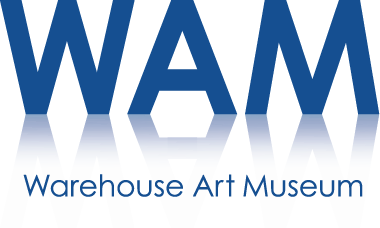Pat Hidson, sketchbook page in preparation for Secret Garden series of paintings.
Pat Hidson, installation view, the Warehouse Art Museum. (Photo by Jim Brozek)
On display in The Secret Garden at the Warehouse Art Museum
A reverence to nature in nine new paintings
"It felt as though I was painting an altar piece."
Making art is my way of expressing my connections to the world. The atmosphere in the studio is grounded by spiritual studies. I also feel part of the art making community, both historic, and in the present. I would not presume to assume. however, that I will have a place in it in the future.
The garden work tied very much into my micro and macro perspective about our universe.
It felt as though I was painting an altarpiece. It shows my reverence for nature. The artist Mayumi Odi, whose work comprises multiple homages to Tara (a Buddhist goddess), is a mentor for me. Although I could have been frustrated because it is impossible to replicate the awe-inspiring beauty of nature, I had to content myself with using my gifts as best I could.
Each painting began with much thought and research. The themes were planned from the start. It was fun to “visit” the environment of the moors for example. The winter one is an homage to the beautiful winters of my Canadian childhood. I grew up in Edmonton, Alberta.
My husband, the photographer Jim Brozek, and I are both fed artistically by our property. We live on the Milwaukee river in a suburban environment; surrounded for the most part by the typical American yard, poisoned by lawn companies. However our yard is a nature sanctuary and it has taken many years to make it so. We were also lucky because the original owners had let one area be natural to start with. Also a few neighbors are also environmentally friendly and also have wild yards. So our gardens are full of great variety, seasonal changes and birds.
This body of work, because of how they are painted, required that I couldn't make a mistake or paint over anything to get it right. It was a challenge but the stakes were too high to mess up as the schedule was intense to get it done. I found my breath-work and mindfulness practice to be a huge help. Also the many preparatory drawings and studies were essential.
-Pat Hidson
Via Portrait Society Gallery













